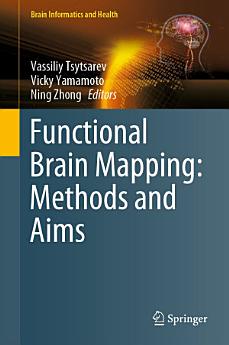Functional Brain Mapping: Methods and Aims
এই ইবুকখনৰ বিষয়ে
The mammalian brain is a huge and complex network that consists of billions of neural and glial cells. Decoding how information is represented and processed by this neural network requires the ability to monitor the dynamics of large numbers of neurons at high temporal and spatial resolution over a large part of the brain. Functional brain optical imaging has seen more than thirty years of intensive development. Current light-using methods provide good sensitivity to functional changes through intrinsic contrast and are rapidly exploiting the growing availability of exogenous fluorescence probes. In addition, various types of functional brain optical imaging are now being used to reveal the brain’s microanatomy and physiology.
লিখকৰ বিষয়ে
Vassiliy Tsytsarev holds a Ph.D. in Neuroscience from Saint Petersburg State University, Russia. Soon after graduation, he moved to Japan and began working at the Brain Science Institute of RIKEN, and the Human Brain Research Center, Kyoto. Functional brain mapping, neural circuits, and different types of brain optical imaging are his main scientific interests. In Japan, Vassiliy worked in the field of auditory neuroscience using intrinsic optical imaging (IOS) and voltage-sensitive dye imaging. After seven years in Japan, he moved to the USA, where he has worked at several universities, for the past six years, at the University of Maryland School. His current focus is on functional brain mapping, epileptic studies and neural network function in the rodent somatosensory system, which offers a perfect specimen for many types of neuroscience research, including models of neural diseases. Vassiliy is the author and co-author of more than 40 publications in peer-reviewed magazines and several book chapters. He is a Senior Editor for the Journal of Neuroscience and Neuroengineering, serves on the board of directors of the Society for Brain Mapping and Therapeutics (SBMT), and on the editorial boards of other scientific journals.
Dr. Vicky Yamamoto is a Cancer Scientist at USC Keck School of Medicine in the Department of Otolaryngology/Head and Neck Surgery with more than 15 years of research experience ranging from developmental neurobiology and stem cell to molecular targeted therapy. Prior to joining USC, Dr. Yamamoto worked at Mount St. Mary's College, The Scripps Research Institute, Cedars-Sinai Medical Center, and California Institute of Technology. She has significant teaching experience and mentored numerous students. She graduated from Mount St. Mary's College with a B.S. in biological sciences and a B.A. in chemistry. She received a Ph.D. in biochemistry and molecular biology from Keck School of Medicine of USC. Dr. Yamamoto's pioneering work on a Wnt co-receptor was conducted at the laboratory of David Baltimore, a Nobel laureate, 1975, at California Institute of Technology. She received a prestigious fellowship from California Institute for Regenerative Medicine (CIRM) to investigate key mechanism that regulates the development of stem cells into neurons. Dr. Yamamoto has been a founding member of the Society for Brain Mapping and Therapeutics (SBMT) and currently serving as an Executive Director. She is also an active board member of the Brain Mapping Foundation.Ning Zhong is currently the Head of Knowledge Information Systems Laboratory and a Professor in the Department of Life Science and Informatics at Maebashi Institute of Technology, Japan. He is also Director and an Adjunct Professor in the International Web Intelligence Consortium (WIC) Institute, Beijing University of Technology, China.





